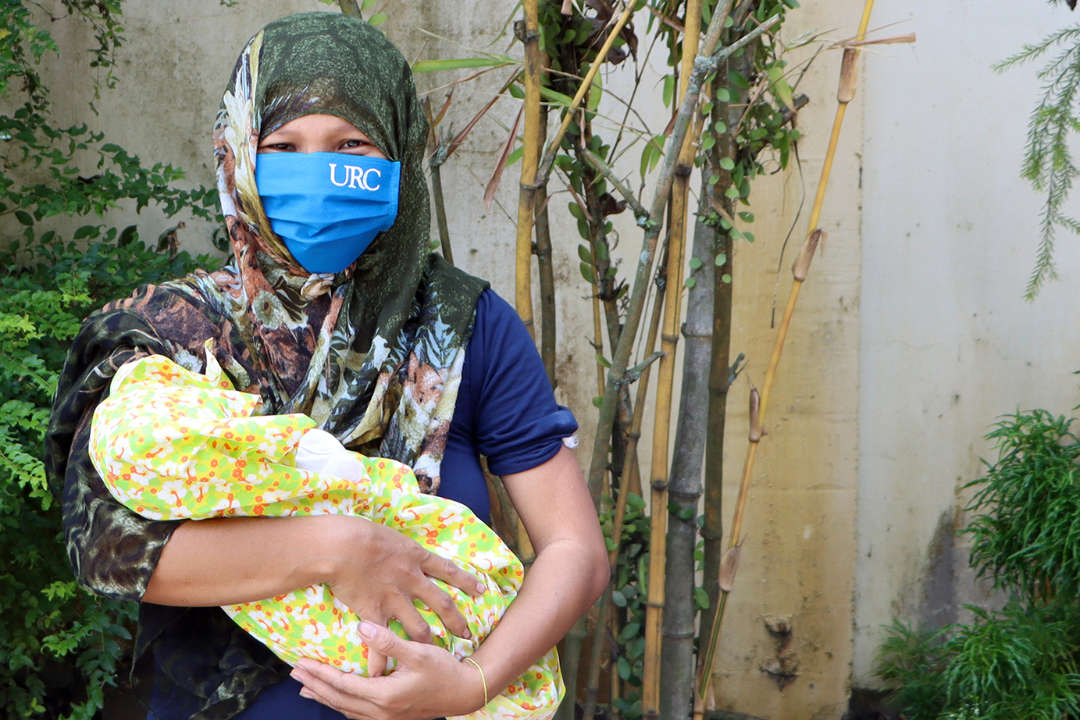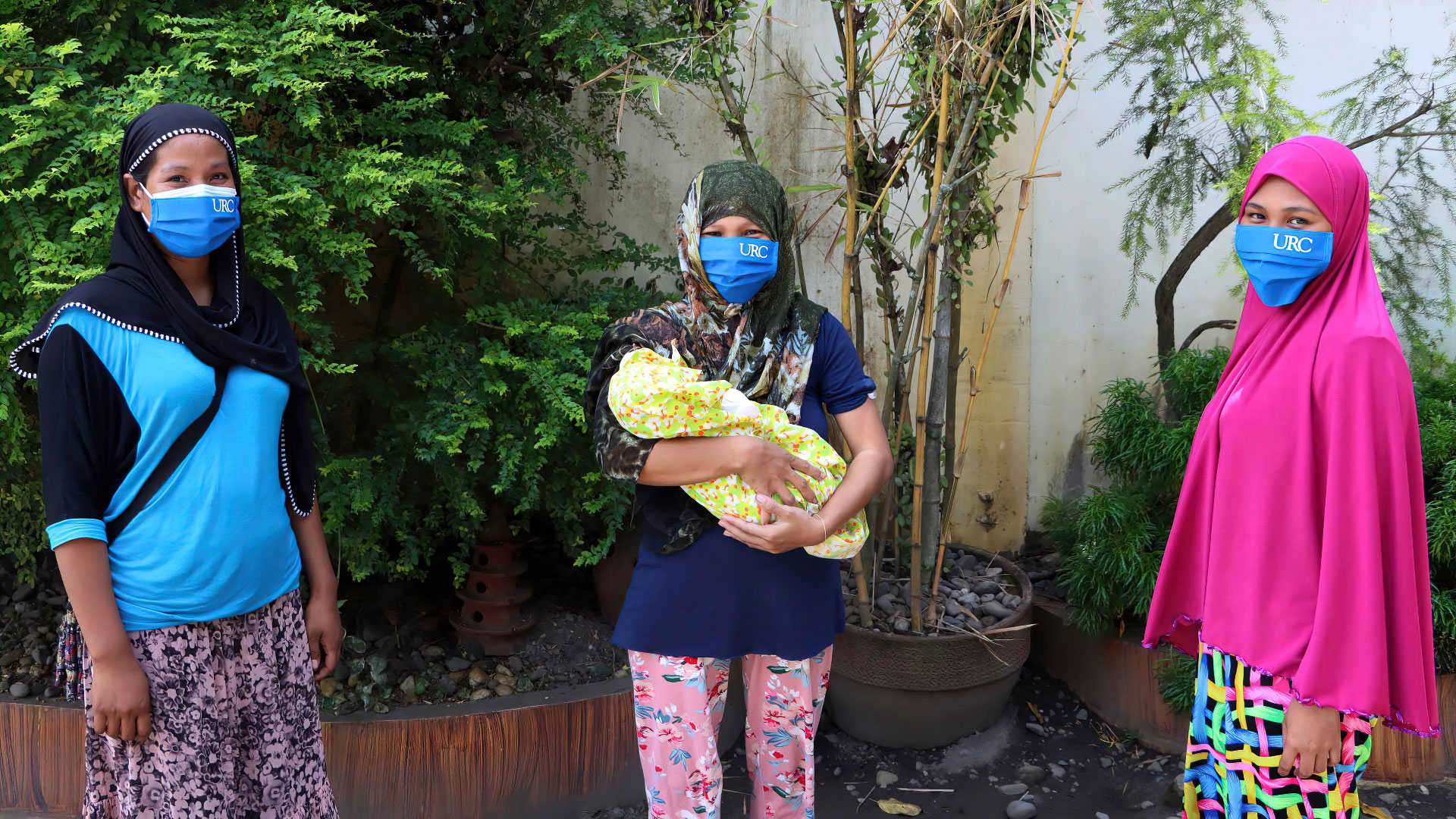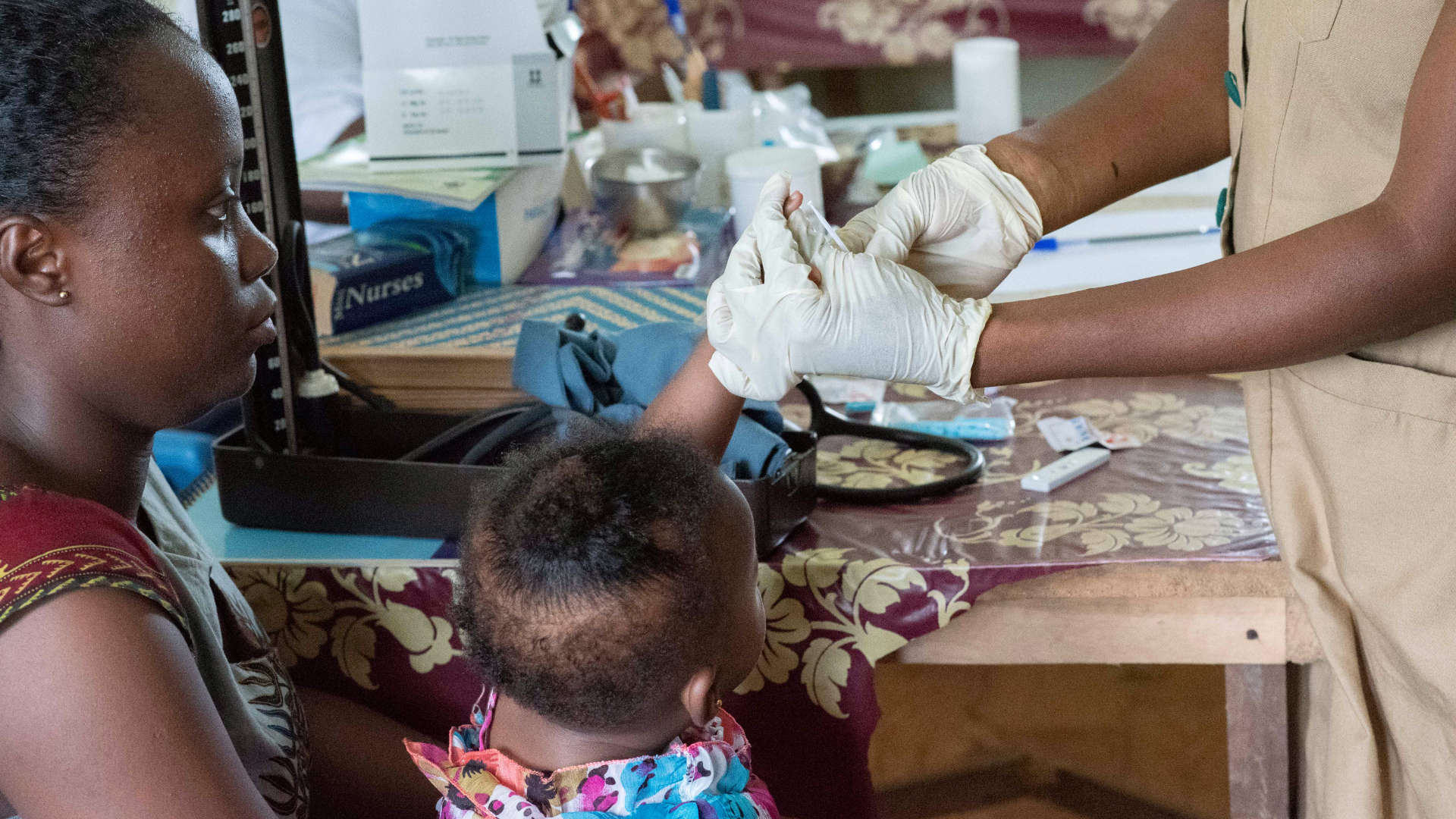Lubaina Zainal, 26, of Buluan, Maguindanao, delivered her fifth child in January 2021 and has been breastfeeding her child exclusively since then. Lubaina knows the benefits of breast milk for her newborn and that the lactational amenorrhea method (LAM) is a modern family planning (FP) method. LAM is a popular FP method in the Bangsamoro Autonomous Region in Muslim Mindanao (BARMM), a region in the Southern Philippines.
However, Lubaina learned from health care providers trained by the USAID BARMMHealth Project – led by URC – that LAM is only effective for up to six months postpartum. Lubaina decided to explore other reliable and effective short-acting, modern FP methods for fear of unplanned pregnancy as she wants to space out her pregnancies by at least two years.
Lubaina joined a community health outreach activity supported by BARMMHealth held in February 2021– which is working to improve access to services for FP, maternal and child health, and adolescent sexuality and reproductive health. Lubaina received information on the benefits, efficacy, and side effects of different modern FP methods. Following counseling services by a trained health care provider, and with the support of her husband, Lubaina chose the DMPA contraceptive injection as a means of birth spacing.
Why the Preference for LAM?
Breastfeeding provides many benefits for newborns, but Lubaina also considers breastfeeding a fulfillment of a mother’s religious duty. The Holy Qur’an (2:233) urges mothers to breastfeed their children for up to two years. Lubaina said living in poverty also compelled her to continue to breastfeed her seven-month-old child.
More than half of the people living in BARMM are experiencing poverty, which is more than twice the national rate in the Philippines. Like many other families in BARMM, Lubaina and her husband are finding it hard to make ends meet. Her husband works as a fisherman in a lake nearby and earns an average of P1,500, or USD $30 per month, which Lubaina said is not enough for their daily subsistence.
Partly because of the region’s cultural customs and socio-economic conditions, more and more couples, and mothers in BARMM prefer to use LAM as a means for birth spacing. However, many mothers do not know that LAM is only effective for up to six months postpartum. Also, LAM is only effective if the:
- Mother is exclusively breastfeeding, which means the baby receives no other foods or fluids besides mother’s milk;
- Mother is amenorrheic, which means that regular menstruation has not returned; and
- Baby is within six-months old.
Most postpartum women in BARMM are not aware of these three essential LAM criteria. Many believe that they will not get pregnant if they are breastfeeding – a misconception that may result in unplanned pregnancies.
Educating Health Providers on FP Options and Counseling
From July 2019 to June 2021, BARMMHealth trained over 300 health care providers in BARMM on FP competency-based training levels 1 and 2 and supplemental training on postpartum FP. This equips them with skills to competently dispense FP services and give clients easily understood information on modern FP methods.
BARMMHealth also trained health care providers in FP counseling, which helps clients navigate the decision-making process of choosing a FP option that suits them. Through FP counseling for postpartum women, health care providers discuss the benefits of lactation-safe contraceptive methods.
In addition, BARMMHealth’s demand-generation activities help address the misconceptions on LAM. This includes use of the Usapan, an FP dialogue between clients and health care providers, and the FP Services on Wheels, a community-based information campaign. Both offer links to immediate FP service provision. BARMMHealth also supports the mobilization of Barangay Health Emergency Response Teams, which provide FP services alongside community-based COVID-19 surveillance.
And BARMMHealth support the Ministry of Health (MOH) to adopt a continuous quality improvement framework to improve the quality of postpartum FP services and FP integration along the continuum of care in both primary care and hospital facilities.
Learning from Real-World Experience
BARMMHealth, the MOH, and provincial health offices will implement a formative study on the social and behavioral determinants on LAM use among postpartum women in BARMM. Research results will help inform program managers and implementers as to the most effective strategy in transitioning LAM users to more reliable FP methods.
In this year’s celebration of World Breastfeeding Week, BARMMHealth is working hard to promote breastfeeding for the benefit of both children and moms. By assisting health care providers help transition LAM users to more reliable modern FP methods, mothers will be better equipped to make informed and healthy choices for themselves, their babies, and their families.



